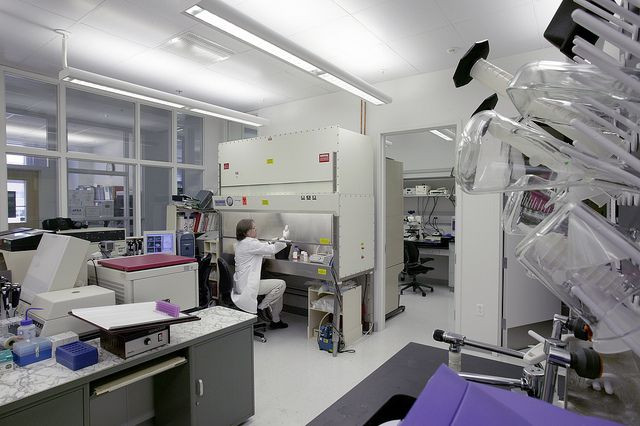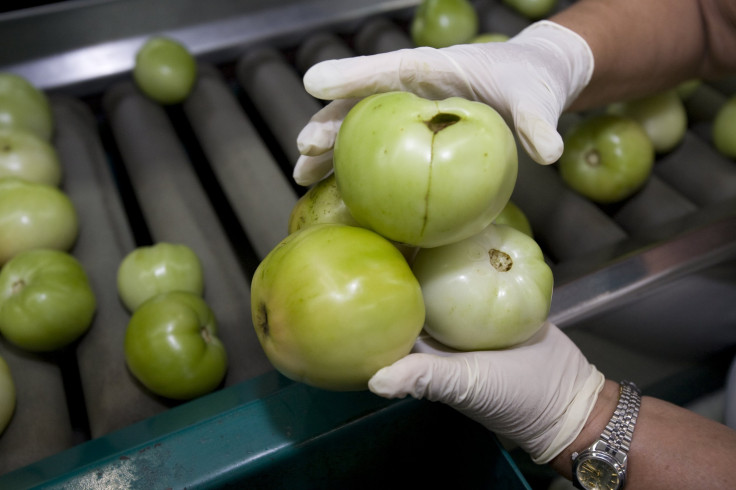The FDA Is Growing And Needs More Scientists, But It Struggles To Recruit

The U.S. Food and Drug Administration is growing in scope, and officials say the agency needs more employees to meet its responsibilities. However, the agency faces a chronic HR challenge: how to entice scientists and physicians from lucrative posts at top universities and pharmaceutical companies to join the government’s ranks.
Earlier this week the FDA submitted a $5.1 billion budget to Congress for 2017, which represents an 8 percent funding boost from 2016. The new money will go toward rolling out a new food safety monitoring system, coming up with better ways to evaluate medicines and support the “cancer moonshot” initiative led by Vice President Joe Biden.
But to complete its duties, the agency says it also will need more chemists, biomedical engineers, statisticians and medical doctors to do everything from review drug applications to develop guidance for food companies. The FDA plans to add 430 more full-time employees to its books next year, bringing its workforce to 16,635.
Drawing up an expansion plan is the easy part. It’s much harder for the FDA to find and keep the best and the brightest scientists on staff. In fact, the agency has long struggled to maintain an adequate scientific workforce, a recent report by the FDA’s Science Board found. In 2007, the same group issued a report titled “Mission at Risk” that reached a bold conclusion: The FDA could not protect public health due to a “weak scientific base.”
If the agency doesn’t solve this HR issue once and for all, the consequences could force officials to pull back on projects to prevent e-cigarette use among youth, combat antibiotic resistance and prevent drug shortages.
Tim McManus, a vice president at the nonprofit Partnership for Public Service, says this puts the public in a bad spot. “Our health, our well-being and our safety is at risk because they don't necessarily have the right people or enough of the right people,” he says.

One part of the challenge is that the FDA competes directly with industry and academics, which often pay more. On average, an executive at the FDA makes $178,439 a year while employees make $108,477. The agency currently has several dozen job openings for a research biologist, pharmacologist and several medical officers that pay from $32,000 to $185,000 a year.
“They're never going to be able to compete with industry because most of the scientists can go to industry and double their salaries relatively quickly,” says Dr. Robert Meyer, a former FDA employee who now directs the Center for Translational and Regulatory Sciences at the University of Virginia.
Benefits are another issue. While companies can offer stock options and bonuses to tempt new talent, scientists who join the government must sometimes divest their portfolios if holding stock might be perceived as a conflict of interest. It doesn’t help that the cost of living in Silver Springs, Maryland, where the FDA is based, is 35 percent higher than the national average.
Then there’s the matter of overcoming the “FDA stigma,” a term used by the Partnership for Public Service to describe the general feeling the agency is not a place where innovative scientists go to work.
Dr. Jesse Goodman, an infectious disease expert at Georgetown University Medical Center and the FDA’s former chief scientist, says many potential candidates don’t realize they can pursue exhilarating and rewarding scientific careers from within the federal government.
“There are incredible needs and opportunities for scientists to not only contribute to public health — because what could be more important than vaccines and keeping medicines safe? — but also to do exciting science,” he says.
Once a scientist is finally hired, retention is another challenge. Scientists who work at the FDA are privy to the ins and outs of the regulatory business and quickly become extremely valuable to the private sector after just a few years on staff.
Since the highly critical 2007 report by the Science Board, the FDA has taken steps to strengthen its workforce. The agency has teamed up with the pharmaceutical industry to hire more scientists in a mutually beneficial arrangement built on user fees. Drug companies pay $2.4 million in fees to the agency for each new drug application submitted and the FDA uses some of this money to expand its staff.
However, critics such as Dr. Sidney Wolfe at the Public Citizen’s Health Research Group says this arrangement creates too cozy a relationship between the FDA and drug companies. In 2014, the agency collected $797 million in prescription drug user fees and approved 41 new drugs, which is about twice as many as in any year for at least eight years prior.
And simply having the money to hire more people isn’t going to solve the agency’s problem. The FDA often still misses out on promising candidates who accept jobs elsewhere before it can even make a formal offer. The Science Board found it still takes an average six months to hire a new employee.
“The best people are the people who are getting other job offers,” Goodman says. “If it takes a federal agency much longer to hire someone than the private sector or an academic health center, you're in a very difficult position.”

In its latest report, the Science Board suggested the agency seek direct-hire authority from the Department of Health and Human Services to bring new employees on board quickly and award higher salaries to scientists through provisions that exempt specialized workers from the federal pay schedule.
The board also said the FDA should strengthen collaborations with research universities and foundations such as the Reagan-Udall Foundation to better identify highly qualified candidates and recommended loosening rules that limit employees’ ability to attend conferences.
Goodman, meanwhile, says the FDA should work harder to appeal to young scientists. Under his leadership, the agency created the Commissioner’s Fellowship Program to attract young scientists to serve two-year stints at the FDA. He says about 200 fellows have completed the program, and the agency has hired roughly three-fourths of them. In 2015, the FDA kept eight of 10 fellows who completed the program on staff.
Meyer says if the agency can’t compete on salary and benefits when courting new scientists, officials ought to play up the public health mission. It was, after all, that original vision that kept him at the FDA for 13 years before he switched to Merck in 2007.
“It's not every day that you're at the FDA where you think you're clearly doing the public’s work, but over the arc of your career, you definitely feel like you're making those contributions,” he says.
© Copyright IBTimes 2024. All rights reserved.






















